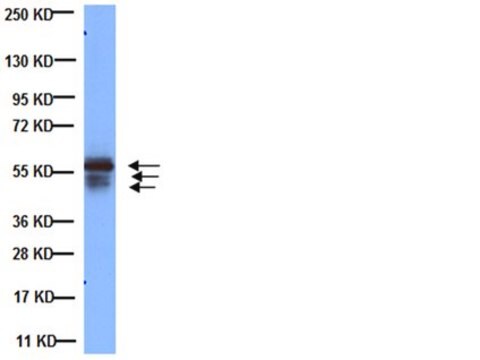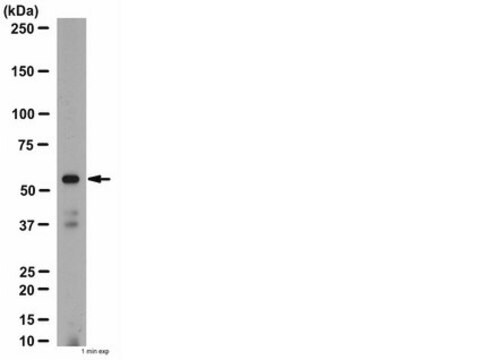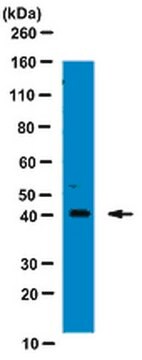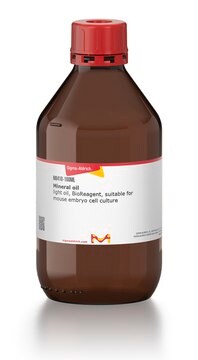MAB1611
Anti-Keratin Epithelial Antibody, clone AE3
clone AE3, Chemicon®, from mouse
Sinónimos:
Type II Cytokeratin
About This Item
Productos recomendados
biological source
mouse
Quality Level
antibody form
purified antibody
clone
AE3, monoclonal
species reactivity
rat, chicken, rabbit, mouse, human, monkey, bovine
manufacturer/tradename
Chemicon®
technique(s)
immunohistochemistry: suitable (paraffin)
western blot: suitable
isotype
IgG1
NCBI accession no.
UniProt accession no.
shipped in
wet ice
target post-translational modification
unmodified
Specificity
Immunogen
Application
Western blotting: Clone AE3 recognizes the 65 to 67, 64, 59, 58, 56 and 52 kDa human cytokeratins of the basic subfamily.
Optimal working dilutions must be determined by end user.
Cell Structure
Cytokeratins
Linkage
Physical form
Storage and Stability
Analysis Note
POSITIVE CONTROL: MCF-7, RT112, and A431 cell lines.
Other Notes
Legal Information
Disclaimer
Optional
signalword
Danger
hcodes
Hazard Classifications
Repr. 1B
Storage Class
6.1D - Non-combustible acute toxic Cat.3 / toxic hazardous materials or hazardous materials causing chronic effects
wgk_germany
WGK 1
flash_point_f
Not applicable
flash_point_c
Not applicable
Certificados de análisis (COA)
Busque Certificados de análisis (COA) introduciendo el número de lote del producto. Los números de lote se encuentran en la etiqueta del producto después de las palabras «Lot» o «Batch»
¿Ya tiene este producto?
Encuentre la documentación para los productos que ha comprado recientemente en la Biblioteca de documentos.
Nuestro equipo de científicos tiene experiencia en todas las áreas de investigación: Ciencias de la vida, Ciencia de los materiales, Síntesis química, Cromatografía, Analítica y muchas otras.
Póngase en contacto con el Servicio técnico








